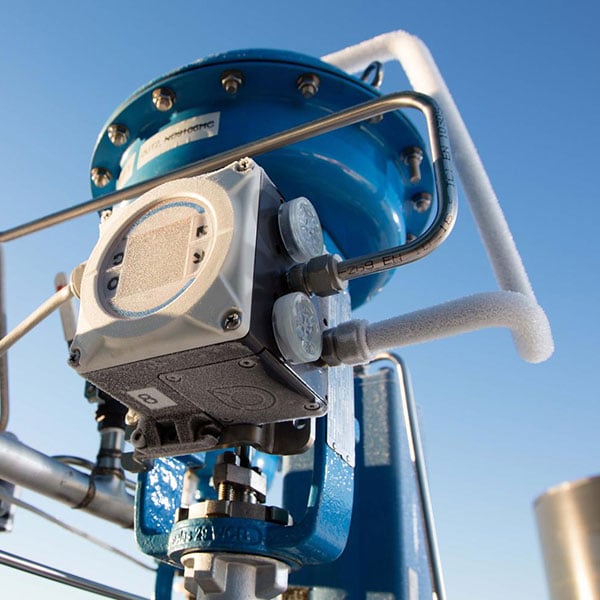Selecting the Right Control Valves: A Guide to Ideal System Performance
Selecting the Right Control Valves: A Guide to Ideal System Performance
Blog Article

Maximize Energy Savings and Comfort With Advanced Building Automation Controls
In the realm of modern architecture and center administration, the combination of innovative structure automation controls stands as an essential development. By taking advantage of the power of automation, structures can adjust, react, and progress in methods that were once unimaginable.
Energy Performance Perks
Power performance advantages can dramatically reduce power consumption and functional expenses in structures. By carrying out energy-efficient techniques and modern technologies, building owners and operators can accomplish substantial cost savings while also contributing to ecological sustainability. One of the main advantages of improving power efficiency in structures is the reduction of utility costs. Energy-efficient systems, such as sophisticated building automation controls, can maximize using resources like lights, home heating, and cooling, bring about reduced energy expenses gradually.
Furthermore, improved power effectiveness can lengthen the life expectancy of structure devices and systems. By operating much more successfully, cooling and heating systems, lighting fixture, and other structure elements experience much less deterioration, leading to decreased upkeep and substitute costs. Furthermore, energy-efficient structures commonly command higher residential or commercial property values and rental rates, giving long-lasting monetary benefits to proprietors.
In addition, energy effectiveness can boost passenger convenience and efficiency. Properly regulated indoor settings with optimal lighting and thermal problems create a more favorable and pleasurable work space, bring about improved worker satisfaction and performance. On the whole, the power efficiency benefits related to sophisticated building automation controls are multifaceted, including expense savings, ecological stewardship, and occupant health.
Enhanced Comfort Control
Enhancing convenience control in structure atmospheres calls for an advanced assimilation of innovative automation systems for optimum resident health. By making use of sophisticated structure automation controls, centers can tailor the interior environment to satisfy the certain demands and choices of passengers. control valves.
Enhanced convenience control goes past fundamental temperature modifications. It consists of features such as tailored settings, occupancy sensing units, and natural light utilization to develop a receptive and vibrant setting. By integrating these advanced controls, structures can not only enhance convenience yet additionally enhance energy effectiveness by optimizing system operations based upon real occupancy and use patterns. Inevitably, prioritizing owner comfort with advanced automation systems brings about a much more delightful and healthier interior setting.
Operational Efficiency Improvements

Additionally, the implementation of real-time tracking and analytics tools enables structure drivers to recognize power inefficiencies and operational abnormalities immediately. By continually keeping track of energy use patterns and system performance metrics, modifications can be made in real-time to maximize power intake and ensure peak operational performance. control valves. Furthermore, integrating need action strategies right into structure automation controls can even more enhance operational performance by dynamically adjusting energy use based upon grid problems and rates signals
Indoor Environment Optimization
Efficient interior climate optimization is an essential element of building automation controls, ensuring owners' comfort and well-being while making the most of energy cost savings. By using sophisticated sensors and controls, constructing automation systems can constantly adjust and keep an eye on temperature level, moisture levels, air top quality, and ventilation to produce an optimal interior setting. Preserving consistent and comfortable conditions not just enhances occupant contentment go to website yet additionally enhances performance and general wellness.
Indoor climate optimization likewise plays a crucial duty in power effectiveness. By fine-tuning home heating, air conditioning, and ventilation systems based on real-time information and tenancy patterns, building automation controls can substantially lower power consumption - control valves. Executing approaches such as demand-controlled ventilation and thermal zoning can aid lessen energy waste while making certain that each location of the structure obtains the necessary conditioning.

Sustainable Atmosphere Development
Structure automation manages not just maximize interior climate problems for energy performance and passenger comfort yet additionally lay the structure for developing a lasting setting through calculated administration of systems and sources. By integrating innovative building automation innovations, such as sensors, actuators, and smart software program, facilities can monitor and change energy use in real-time to minimize waste and reduce their carbon impact. These systems make it possible for predictive maintenance, determining potential issues prior to they rise and enhancing devices efficiency to enhance long life and efficiency.
Additionally, lasting environment development extends beyond energy management to incorporate water conservation, waste decrease, and interior air quality renovation. Building automation controls can manage water usage, detect leakages, and make certain correct waste disposal techniques, adding to overall sustainability efforts. In addition, by regulating and monitoring air flow and filtration systems, these technologies improve resident wellness and efficiency while decreasing energy consumption connected with cooling and heating operations.
Verdict
To conclude, progressed structure automation controls offer substantial advantages in terms of power cost savings, convenience control, functional performance, indoor environment optimization, and creating a lasting environment. By executing these controls, buildings can attain ideal efficiency while reducing energy consumption and enhancing passenger comfort. It appears that making use of sophisticated automation modern technology is crucial in enhancing building performance and producing an extra lasting future.
Energy performance benefits can significantly decrease power consumption and operational costs in structures. Overall, the energy performance advantages associated with sophisticated building automation controls are complex, encompassing price financial savings, environmental stewardship, and owner well-being.
Furthermore, incorporating need response approaches into building automation controls can additionally boost functional efficiency by dynamically readjusting power usage based on grid problems and prices signals.
Structure automation regulates not just optimize interior climate problems for energy performance and resident convenience however also lay the structure for creating a lasting environment via calculated monitoring of systems like this and sources.In conclusion, this progressed structure automation controls deal significant advantages in terms of energy financial savings, convenience control, functional performance, indoor environment optimization, and creating a lasting atmosphere.
Report this page